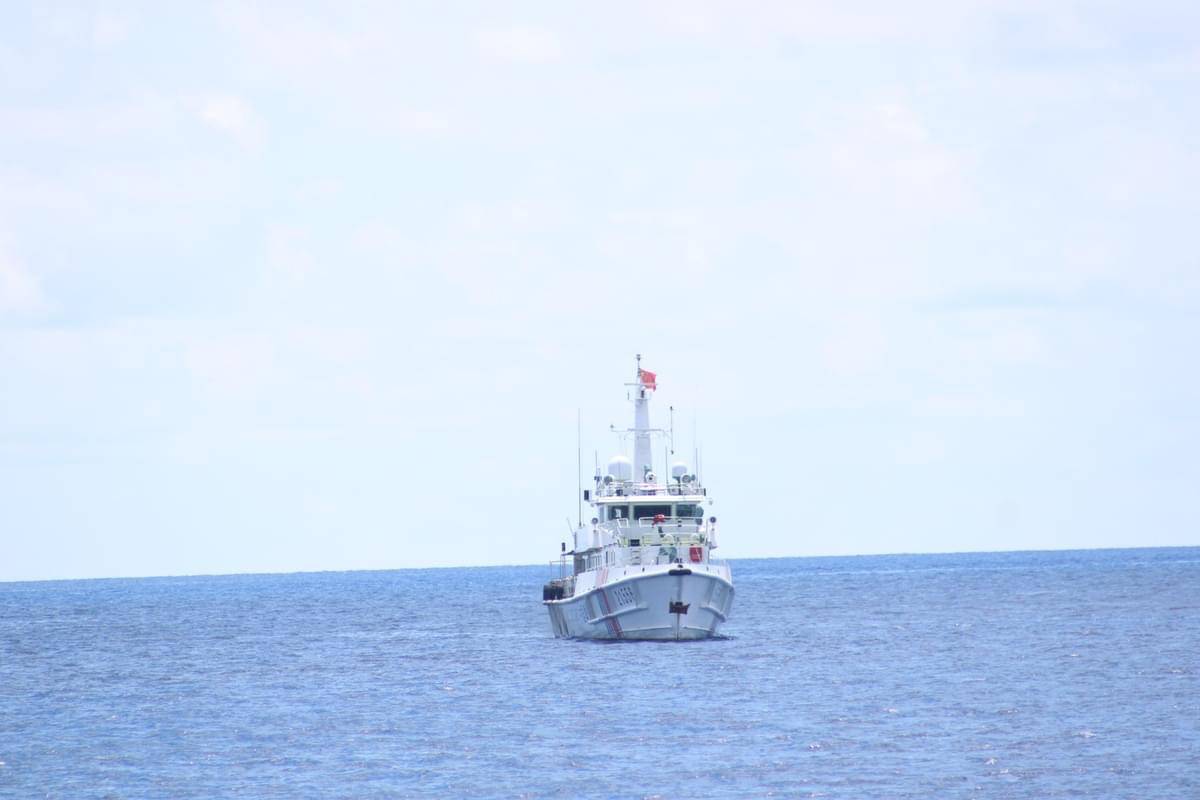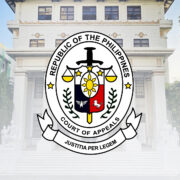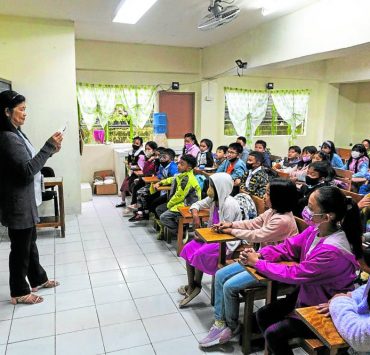Before Escoda collision, China increasing presence at Ayungin

The number of Chinese vessels has increased near Ayungin (Second Thomas) Shoal in the West Philippine Sea in the past week, the Armed Forces of the Philippines said on Tuesday, just weeks after a rotation and resupply mission was carried out without incident after Manila and Beijing agreed to ease down tensions.
In a news briefing, Rear Admiral Roy Vincent Trinidad, the Philippine Navy spokesperson, said 41 Chinese vessels were seen near Ayungin from Aug. 13 to Aug. 19, much more than the six vessels seen linegring there from Aug. 6 to Aug. 12.
Rotation and resupply missions to the BRP Sierra Madre, the Philippine Navy’s outpost at Ayungin, have been frequently met with harassment from China, to assert its claims in nearly the entire South China Sea. Last month, the Philippines and China reached a “provisional understanding” over Ayungin to de-escalate tensions.
Trinidad said he did not want to speculate why there was an increase in the number of Chinese vessels near Ayungin.
In all, there were 129 Chinese vessels tracked from Aug. 13 to Aug. 19 across the West Philippine Sea, or the waters spanning the Philippines’ exclusive economic zone in the South China Sea. Of these, 98 are from Chinese maritime militia, 18 from China Coast Guard (CCG) and 13 from People’s Liberation Army Navy (PLA-N).
This number is higher from the 92 vessels seen there a week earlier.
In Escoda (Sabina) Shoal, where Philippine Coast Guard (PCG) ships were damaged from collisions caused by CCG vessels on Monday, there were 12 Chinese militia, five CCG and two PLA-N seen from Aug. 13 to Aug. 19.
“We constantly monitor their presence. The 129 (Chinese ships) total is still within the acceptable range that we have been monitoring for the past two to three months,” Trinidad said. In May, over 150 vessels were tracked in the West Philippine Sea.
China claims sovereignty over almost the entire South China Sea, deploying an armada of coast guard vessels to protect what it considers its territory, hundreds of kilometers off its mainland. An international arbitral tribunal has said Beijing’s claim has no basis under international law.
‘180-degree turn’
Meanwhile, the National Maritime Council (NMC) on Tuesday urged Beijing to “refrain from aggressive actions” following the ramming of PCG ships by CCG vessels near Escoda Shoal.
In a Palace briefing, newly appointed NMC spokesperson Alexander Lopez described CCG’s actions against BRP Bagacay (MRRV-4410) and BRP Cape Engano (MRRV-4411) as “180-degree turn” from its “innate function” to preserve the safety of life and property at sea.
“It’s a 180-degree turn of what they (China) are supposed to do, and what we have done, on the morning of Aug. 19,” said Lopez, the former chief of the military’s Western Command.
On August 19, the PCG ships were on the way to bring supplies to Patag and Lawak Islands near Escoda Shoal when they were rammed by CCG vessels numbered 21551 and 3104.
The NMC said the CCG’s “unprofessional and dangerous” actions violated the United Nations Convention on the Law of the Sea and the 1972 Convention on the International Regulations for Preventing Collisions at Sea.
“These illegal actions do not contribute to confidence-building measures necessary for the improvement of relations on the basis of mutual respect and for a rules-based international order. Hence, the Philippines urges China to refrain from aggressive actions and adhere to international law,” said Lopez, who was reading a statement from NMC.
But China blamed the Philippines for the incident, saying it was the PCG that “deliberately rammed” into the CCG insisting that the responsibility for the incident “fully lies with the Philippines.”
China’s Ministry of Foreign Affairs on Monday said the PCG attempted to “intrude” into Xianbin Jiao (China’s name for Escoda Shoal) to send supplies to the outposts to “seek long-term presence there.”
Diplomatic approach
He said the country would maintain its “diplomatic approach” to peacefully resolve disputes even as it expressed “serious concern over the deliberate harassment and infringement by China against Philippine sovereignty, sovereign rights and jurisdiction in the West Philippine Sea.”
Both Lopez and Presidential Assistant on Maritime Concerns Andres Centino said the PCG was instructed to gather evidence and proper documentation for the possible filing of a protest by the DFA.
Lopez said this was also to debunk China’s claim that the PCG ships entered Escoda Shoal without China’s permission.
“We are very deliberate in coming up with its factual details. It’s more of a responsibility to our public, and to an extent our international audience, that this is really what happened. Then let the public decide,” he said.
In the same press briefing, Centino raised the possibility of the Philippines filing a case against China before the United Nations and other international fora.
He said the inclusion of the National Intelligence Coordinating Agency, the National Security Adviser, and the Office of the Solicitor General as members of the NMC “actually signified the intent of the government to consider the filing of a case.”
“The Solicitor General is tasked to do these things, and I would suppose that its inclusion in the council means that is one of the options that will be considered,” Centino said.
Lopez added that the DFA was seriously studying the filing of a diplomatic protest against Beijing over the Aug. 19 collision.
The country, he said, “can never go wrong” in using a diplomatic or peaceful approach to the West Philippine Sea dispute despite China’s recent aggression against the Philippines.
The DFA earlier filed a diplomatic protest against China over the People’s Liberation Army Air Force’s dropping of flares on the path of a Philippine Air Force plane over Panatag (Scarborough) Shoal on Aug. 8.
Last week, the Chinese foreign ministry said it lodged a diplomatic protest against the Philippines over the long-staying BRP Teresa Magbanua, a PCG vessel, in Escoda Shoal.
Condemnation
China’s actions on Aug. 19 have drawn condemnation from the United States which described them as “dangerous” and “reckless,” while Japan through its embassy in Manila also expressed serious concern as it reiterated its call for peaceful settlement of disputes.
“These actions are the latest examples of the PRC (People’s Republic of China) using dangerous and escalatory measures to enforce its expansive and unlawful South China Sea maritime claims. The United States calls upon the PRC to abide by international law and desist from its dangerous and destabilizing conduct,” the US Department of State said in a statement.
Canadian Ambassador David Hartman, in a post on X on Monday, said the actions taken by Beijing were contrary to de-escalation efforts.
“Canada condemns the irresponsible and dangerous maneuvers of the China Coast Guard which caused damage to two [Philippine Coast Guard] vessels near Sabina Shoal. These actions are inconsistent with China’s obligations under international law and undermine efforts to de-escalate tensions in the South China Sea,” Hartman said.
Japanese Ambassador Endo Kazuya, also in a post on X on Monday, said: “Any harassment [and] actions which increase tensions or disturb navigational rights are not tolerated. Japan stands with the Philippines by upholding rules-based order and peaceful settlement of disputes based on international law.” WITH REPORTS FROM JACOB LAZARO AND REUTERS

















